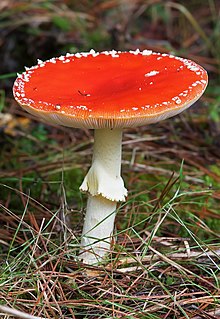Ethnomycology
American banker Robert Gordon Wasson pioneered interest in this field of study in the late 1950s, when he and his wife became the first Westerners on record allowed to participate in a mushroom velada, held by the Mazatec curandera María Sabina.
Later researchers in the field include Terence McKenna, Albert Hofmann, Ralph Metzner, Carl Ruck, Blaise Daniel Staples, Giorgio Samorini, Keewaydinoquay Peschel, John Marco Allegro, Clark Heinrich, John W. Allen, Jonathan Ott, Paul Stamets,Casey Brown and Juan Camilo Rodríguez Martínez.
[3] Although not an ethnomycologist as such, philologist John Allegro has made an important contribution suggesting, in a book controversial enough to have his academic career destroyed, that Amanita muscaria was not only consumed as a sacrament but was the main focus of worship in the more esoteric sects of Sumerian religion, Judaism and early Christianity.
[4] Clark Heinrich claims that Amanita muscaria use in Europe was not completely wiped out by Orthodox Christianity but continued to be used (either consumed or merely symbolically) by individuals and small groups such as medieval Holy Grail myth makers, alchemists and Renaissance artists.
It remains open to interpretation what effect this popularization has on ethnomycology in the academic world, where the lack of verifiable evidence has kept its theories with their often far-reaching implications shrouded in controversy.
